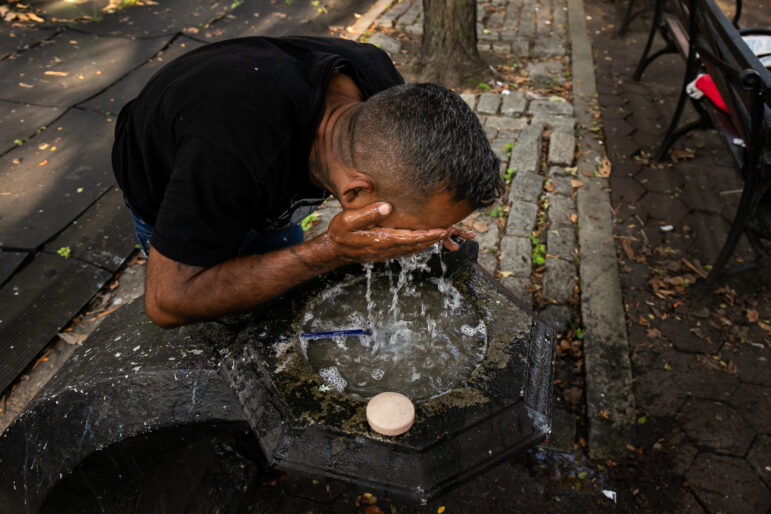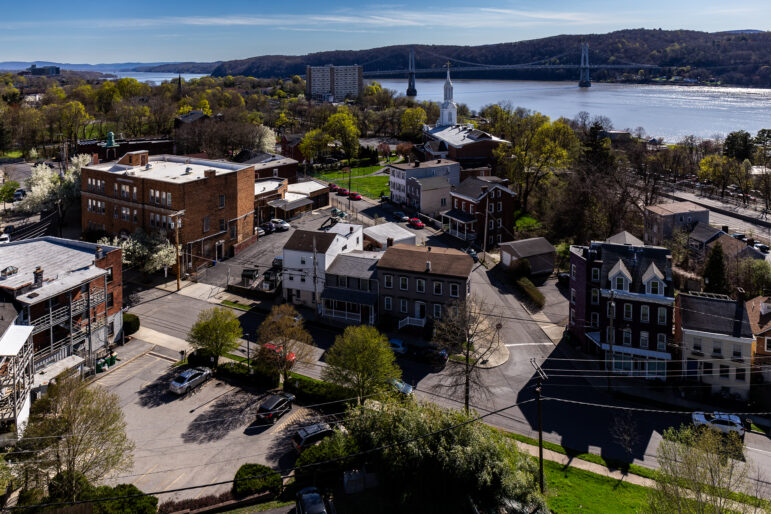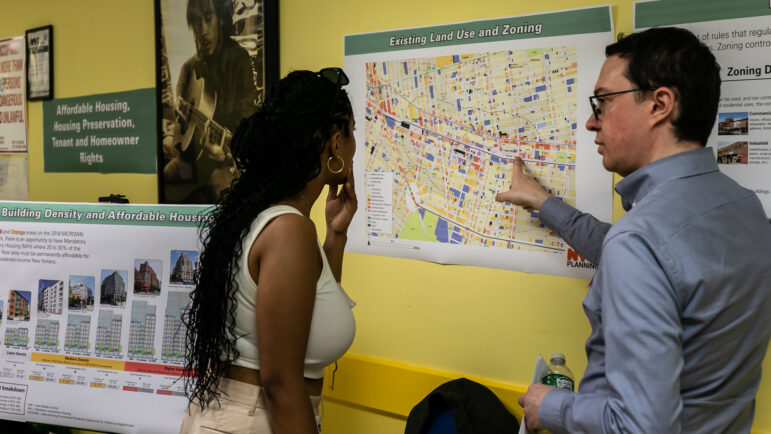“While it becomes more dangerous to live outside without reprieve from the heat, the city has doubled down on penalizing the homeless instead of focusing on housing initiatives.”

A few weeks ago, during one of the hottest summers in New York City, Mayor Eric Adams proclaimed: “When I grew up as a kid—air conditioner? I didn’t even know what that was.”
He joked that his mother told him to stick his head in the refrigerator. This was the mayor’s response to the fact that many of the city’s migrant shelters lack stable air conditioning while the city is enduring record-breaking heat this summer. While the mayor’s suggestion to use fans and paper fans is lukewarm (pun intended), at best, the real hot topic here is the lack of adequate housing in New York City, and the increased risk of death due to rising temperatures.
As summers get hotter, people might die from the lack of adequate permanent housing policies in the city. The National Weather Service reports that heat is the leading cause of weather-related death and injury, surpassing floods, hurricanes, and tornadoes combined. And, people experiencing homelessness are 200 times more likely to die of heat-related causes than people with housing.
Thus far, a majority of the mayor’s rhetoric and policies towards asylum seekers in the city have resorted to divisive tactics to create a competition between domestically unhoused New Yorkers and asylum seekers. The reality is that New York City is experiencing a massive housing shortage, which affects all of us. Consequently, housing policies that expand the permanent, affordable housing stock will benefit all New Yorkers.
The mayor’s comments come on the heels of the Supreme Court’s ruling in Grants Pass v. Johnson, granting states and cities the ability to criminalize homelessness, even when cities do not have adequate shelter beds available. This ruling will make matters worse for more than 205,000 asylum seekers in New York City, who have few legal protections, little to no access to permanent housing in the city, are not all guaranteed shelter, and now have to grapple with unsafe temperatures. As of today, about 65,000 asylum seekers remain in city run shelters, as many have been exited under the city’s new shelter policies and have had to live outdoors, inside subways, cars, and buses.
While it becomes more dangerous to live outside without reprieve from the heat, the city has doubled down on penalizing the homeless instead of focusing on housing initiatives. In less than two years, the city conducted 8,000 encampment sweeps and forcibly removed 2,308 individuals sleeping outdoors. However, only three of them were permanently housed from these sweeps.
Rental vacancy rates for units below $1,650 per month have fallen below one percent, while the vacancy rate for market rate units is less than 1.4 percent. At the same time, the shelter systems are overburdened. The status quo simply cannot hold, something is going to break. Before it is too late, policymakers must create a plan for building fully affordable housing quickly and expand the eligibility of tenants to include asylum seekers as the crises of homelessness and global warming compound and worsen.
In the short term, the city should roll back its shelter exit policies and expand its “right to shelter” policy to include asylum seekers. In the medium term, the city can also expand the eligibility of housing vouchers like CityFHEPS to include asylum seekers. The city should also provide cash transfers to support the housing costs of asylum seekers who are actively seeking permanent housing.
In the long-term, the city must explore innovative, expedient, and cost-effective building solutions such as modular housing. It is less expensive to build than regular brick and mortar housing, and the practice of assembling building components itself is not new to New York. In fact, in the aftermath of Hurricane Sandy, the city had created a blueprint for the use of modular housing to rehome displaced New Yorkers. They even built a prototype that stands in Brooklyn today.
Modular housing, which can be built for multifamily use, has several advantages. These homes can utilize portable air conditioning, they are safer, larger, and more dignified than tiny homes, they are less costly to build and to live in, and there are suppliers in the tri-state area who can help build thousands of modular homes in the span of two or three months.
In peak winter this year, several emergency shelters were at risk of a major storm. Mayor Adams relocated hundreds of asylum seekers from Floyd Bennett Field to a high school in Brooklyn. When he faced backlash for interrupting school, the mayor said: “We’re not going to say in the city that when we have an emergency that impacts migrants, we’re not going to use our school buildings.”
The lack of available affordable housing is undoubtedly the city’s biggest emergency. Modular housing offers the best option for the city to act quickly and proactively to ensure that all New Yorkers, including asylum seekers have access to housing, respite from unsafe, life-threatening climate conditions, and a shot at what they came here for: the American Dream.
Rudrani Ghosh is a storyteller and an advocate for migrant rights in New York City, hailing from the city of Kolkata, in India. She is a policy entrepreneur at Next100, where she focuses on increasing access to affordable and dignified housing for refugees and asylum seekers.








